Part 1: Establishing a plan for the final years of compulsory education – what are the options?
Years 9 and 10 – The ‘black hole’ of education
It’s no secret that Years 9 and 10 are some of the most challenging years of high school with the primary focus of this age group on identity formation and establishing a sense of social belonging. The issues associated with this phase is compounded by the onset of puberty, with parents and teachers alike, navigating challenges in maintaining positive relationships and managing the heightened sensitivities of their children or students. Increased incidents of bullying, apathy, withdrawal from the family and behavioural issues are all symptomatic of the significant internal and external challenges this age group must navigate.
Within a school context, these behaviours are magnified, in part by the fact that middle school reflects a ‘limbo state’ in education, where many students struggle to see the relevance of what they are learning yet there are new academic challenges and expectations, and greater emphasis on grades and performance. Year 9 and 10 students can experience stress, anxiety, and feelings of inadequacy as they navigate academic pressures and strive to meet academic goals.
In the Australian education system, some of the key activities in middle school include:
- Year 9 NAPLAN, an assessment designed to be used as a diagnostic tool to assist schools identify students who may require additional support in literacy and numeracy. The NAPLAN has also been used as a signal for career and pathway planning to help schools guide their students in upper school course selection processes.
- Work readiness programs and work experience which provide students with exposure to various job roles and industries.
- Timetabled formal career education programs to encourage students to consider education, training and employment options.
- Exposure to career expos, university and TAFE open days, and access to speakers who share career stories, and information on industries and job roles.
- Opportunities to explore subject areas, through elective subjects, specialist programs, competitions and extra-curricula activities.
- School based course counselling processes and parent/student senior school information sessions, designed to provide information on career pathways and senior school offerings.
Senior school pathways – Which way do I go?
To some young people, a build-up of uncertainty during middle school regarding Years 11 and 12 and managing the rising pressure and expectation to ‘make a choice’ about their pathway can be incredibly daunting and lead to overwhelm, withdrawal or even school refusal. Let’s face it, it is normal at 15 not to know what you want to do once you leave school, so it is no wonder there is so much stress associated with decisions related to senior secondary education. For parents and carers, they rely on their child’s school for advice and their own personal experience to help their child navigate the choices for senior school. Parents who have been homeschooling their children lean on their networks and must source and interpret their own research to support their child with their career pathway decisions. (See part 2 of this Blog for tips and tricks).
In a school context, the quality of advice and breadth of offerings in senior secondary including access to vocational education and training (VET), and real-world learning comes down to school resources, timetable flexibility and the skill set of teaching staff. Every school tackles the situation differently. From schools who keep most of the learning experience contained within the school gates, to others who prioritise career education, adopt innovative timetabling arrangements to allow for ultimate flexibility and choice.
Regardless of school approach, young people and parents are urged to do the research and fact check some of the narrative around senior school options and post school pathways. The fact of the matter is, that employers look for more than credentials and high test scores today. They are seeking employees who can adapt to their environment, individuals who are coachable and have developed efficient strategies for learning, individuals who cannot just identify a problem, but who have the capacity to offer and/or execute a solution and those with evidence of both breadth AND depth of work experience or training. Here are some common misconceptions about school options and pathways we’d like to set the record straight on:
Misconception: “ATAR is a superior pathway to a VET pathway”
Really, they just focus on a different learning approach and are designed to achieve different outcomes.
ATAR courses are designed by state or territory Boards of Studies, and provide students with a general, theoretical understanding of a subject area and prepare students for further academic studies. Students who undertake these courses typically choose at least four courses, required to generate an ATAR score that are used for university entry. Some students elect to undertake one or two ATAR courses in addition to a Certificate IV VET qualification to include as a part of a VET pathway to university.
This myth may be fuelled by the fact that traditional professional careers such as law, medicine and engineering still require ATAR level studies (and in some case, there are prerequisite courses) for direct entry. This is the case for a small number of traditional degrees, where ATAR is the most direct pathway, however most universities offer the opportunity to ‘switch’ degrees once a student commences another undergraduate degree and meets internal requirements. Most degrees, however, are accessible through alternative pathways.
VET courses on the other hand are developed and endorsed by industry and deliver skills-based training with a direct employment outcome. VET assessment consists of a mix of knowledge and skills. A learner is deemed competent once they can demonstrate application and understanding of a skill, in real time, and under real conditions. There is a trend towards senior secondary aged students studying higher level credentials to accelerate their pathway to employment and higher education. However, most schools are not equipped to deliver this level of training due to the industry expertise and resources required to validly assess competence.
Some states and territory tertiary admissions centres, as well as Boards of Studies, have assigned value for VET studies in the contribution towards ATAR. The majority of universities recognise higher level VET studies for admissions into a range of undergraduate courses.
Misconception: “If my child doesn’t choose ATAR courses at school, they‘re taking the easy option”
There is no doubt that students who undertake ATAR courses in their final years of education have a challenging task in front of them. The workload is significant and the pressure to achieve the highest score possible to increase competitiveness in university admissions rankings can be incredibly challenging. However, the challenge faced by students who undertake VET pathways are different but are no less high stakes than their peers undertaking ATAR or more general non-ATAR courses.
Students who undertake VET studies, are required to manage competing deadlines set by different education providers and they must learn how to adapt to different learning contexts and delivery styles. Students who select VET qualifications delivered by external providers AND a school based course load often have to make up for the school work they missed while in training to avoid falling behind.
Some students choose to combine both VET studies AND ATAR courses which provides another layer of complexity and requires them to adopt highly effective time management skills and dedication.
In terms of a potential disparity in rigour and difficulty, ATAR courses derive rigour through standardised assessment and require students to undertake lengthy examinations, however a “pass’’ grade can be achieved anywhere from 50 percent accuracy.
VET assessments derive rigour through competency-based assessment. Students are deemed either competent or not yet competent, where 100% accuracy is required to pass. Challenging examinations are replaced by strict assessment conditions and the requirement to meet industry endorsed performance benchmarks which may be audited by a national or state VET regulator.
Misconception: “If traditional schooling is not working for me, my options are limited.”
This is absolutely not the case! Australian states and territories have legislation requiring students to be enrolled in full time education until they are 18 or finish Year 12, whichever occurs first (refer to your relevant School Education Act or Department of Education for specific requirements). The exception to this requirement, however, is if a senior school aged student is in full time training and/or employment. Employment options are relatively limited for early school leavers, most opportunities are for low skilled employment which may not align with a young person’s capability and/or career aspirations. However, pre apprenticeships, apprenticeships and traineeships are a solid option that allows young people to earn and learn while working towards a skilled job role.
Full time training options are a great way to access relevant learning in a real-world adult environment and specific to a young person’s area of interest and career aspirations. Training is also a brilliant way to qualify for university admission.
Homeschooling is also a brilliant option for students and families seeking a highly personalised and autonomous learning experience. There are some excellent homeschool curriculum platforms available and a growing community of like-minded families coming together to arrange rich learning opportunities for young adults who do not want a traditional education.
If you have a young 14 or 15 year old preparing for course selection at school, or you may be a parent who has been homeschooling your child and you are considering your options for years 11 and 12, it is likely that you are feeling confused, overwhelmed and even perhaps frustrated by the lack of transparency around senior school pathway options. Do not despair, there are so many solid options for your child. Whilst remaining at school is a perfectly sound and beneficial option, there is a growing movement of families and community members seeking and creating high quality alternatives for 15-18 year olds, IDEAcademy being just one of them. These options provide the same, or in some cases, better outcomes compared to traditional senior school pathways. They not only open the same doors to post compulsory schooling options, but in some cases, they offer an accelerated or enhanced experience.
Here are some points to keep in mind when navigating this pathway
- The final two to three years of education, should be the most strategic and rewarding years of a person’s life. If your child’s current learning arrangements don’t feel like this, then consider your options external to schooling.
- It’s perfectly normal for adolescents not to have a clear idea of what they want to do. Taking a strategic approach to pathway planning becomes even more important in these circumstances.
- Encourage your child to use the final couple of years of compulsory schooling to explore their options. This will help them to make better, more informed decisions.
- The choice between a VET course and degree depends on both the field you are hoping to work in and the type of work you want to do. One isn’t better than the other.
- Reach out, network, ask questions.
As we conclude the first part of our series on transitioning from high school to the real world, we recognise the challenges and misconceptions that often accompany this journey. Despite common myths, both academic and vocational routes offer valuable experiences and opportunities.
Parents and students must approach these crucial years with flexibility and exploration. Whether opting for vocational training, entering the workforce directly, or pursuing higher education, each path equips young people with essential skills and experiences for their future. It’s essential to remember that success extends beyond academic achievements alone; adaptability, problem-solving, and real-world experience are increasingly valued by employers.
While the journey from high school to adulthood may seem daunting, it also presents a wealth of opportunities for growth and discovery. Check out part two in this series “Setting your child up for a successful transition to life beyond ‘school’” here.
If you would like to know more about IDEAcademy or discuss pathway options please visit our website or get in touch with our team info@ideacademy.com.au
Blogs you may also be interested in:
School Refusal: Is your child refusing to go back to school?



